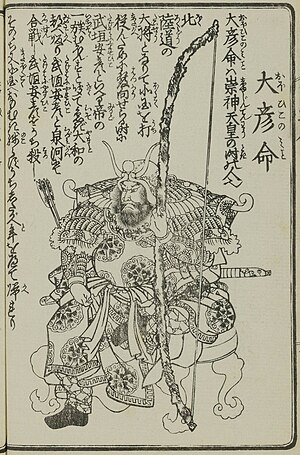

| Mimaki-Hime 御間城姫 | |
|---|---|
| Empress consort of Japan | |
| Reign | 97–29 BC (68 years) |
| Predecessor | Ikagashikome |
| Successor | Saho-hime |
| Empress Dowager of Japan | |
| Reign | 29 BC-? |
| Predecessor | Ikagashikome |
| Successor | Yasakairi-hime |
| |
| Spouse | Emperor Sujin |
| Issue | Emperor Suinin Izanomawaka Kunikatahime Chijitsukuyamatohime Igahime Yamatohiko |
| Father | Prince Ohiko [ja] |
Mimaki-Hime (御間城姫) was Empress Consort of Japan from 97 BC to 29 BC, and then Empress Dowager from 29 BC to an unknown date.[1][2]
The Nihon Shoki tells us her children are Emperor Suinin, Izanomawaka, Kunikatahime, Chijitsukuyamatohime, and Yamatohiko.[3][4][5] where as in the Kojiki she has another child named Igahime.[4][5] The Nihon shoki also states that she had her children with Emperor Sujin before her ascension as Empress Consort.[3][6] While the Nihon Shoki does not give a name for her father, the Kojiki gives her father's name as Prince Ohiko.[7][4][5][6]

{{cite web}}: CS1 maint: multiple names: authors list (link)
| Japanese royalty | ||
|---|---|---|
| Preceded by | Empress consort of Japan 97–29 BC |
Succeeded by |
| Preceded by | Empress dowager of Japan appointed in 29 BC |
Succeeded by |